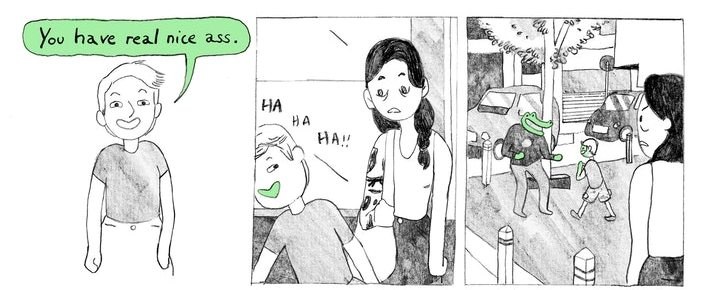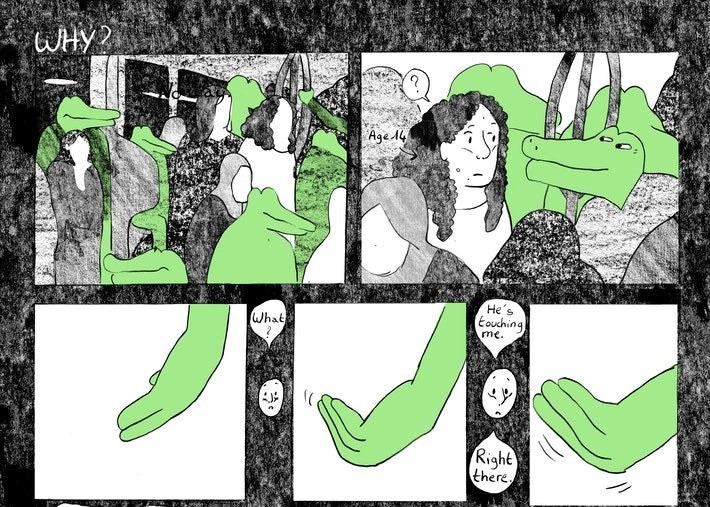Navigating a Highly Visual World: The Importance of Helping Students Analyze Global Graphic Fiction
Posted on July 07, 2020

Students in Washington College’s Children’s and Young Adult Literature class are there because they enjoy reading, they want to write, or they want to teach about literature for younger readers. This year’s class contains seventeen students from a variety of majors, but mostly studying English, elementary education, or secondary English education; more than half intend to teach. These students recently applied what they had been learning about reading literature with pictures to analyze the international graphic works recommended in the WWB Campus blog post “Global Graphic Lit to Fire Up Your Students This Winter,” which caught my eye just as I was about to introduce illustrated texts to the class.
My students were nervous about their own capacity to interpret these texts, which is common. Students of all ages often struggle with the critical reading of graphic literature, despite their exposure to illustrated texts such as children’s books, and the fact that we live in what scholar Karen Coats describes as “image-saturated culture”(Coats 167). To prepare for this analysis, therefore, students in the class read three texts: Molly Bang’s Picture This: How Pictures Work, Scott McCloud’s Understanding Comics: The Invisible Art, and “Reading (with) pictures,” from The Bloomsbury Introduction to Children’s and Young Adult Literature by Karen Coats. These texts provided explicit instruction on – and basic principles for – critically examining illustrated texts.
To synthesize these readings, students were asked to choose a piece recommended in the WWB Campus blog post and analyze its power and purpose, considering “How does the structure of a picture –- or any visual art form –- affect our emotional response? (Bang xiv). They examined lines and fonts, panels and their gutters, word-picture interactions, blank spaces, and images (including color, shape, location, and size). Most students chose to focus on the “Crocodiles are Everywhere” series by Juliette Boutant and Thomas Mathieu, translated by Edward Gauvin, first for its initial aesthetic appeal and then for its content, which felt universally relevant in this #MeToo era. The series depicts the day-to-day trauma women experience at the hands of male harassers and their enablers –- from handsy employers to would-be assailants to male onlookers who do nothing to help.
As they delved into the series, one group immediately felt the power of space in the story “Like Father Like Son,” in which a woman’s encounter with a young boy on the street turns ugly.

Molly Bang explains that the meaning of a picture is determined, in part, by the space it occupies: if an image is not confined within a paneled box, this creates a sense of timelessness, and perhaps also of danger (100, 108). Scott McCloud also stresses the timelessness created by “bleed,” when a panel runs off the edge of the page: that panel’s presence may be felt in the panels that follow (102). Students noted all these effects in "Like Father Like Son," explaining that the lack of boundaries between images created a feeling of permanence, “suggest[ing] the effects of those words held more gravity than what can be contained in a frame.” The artist's evocative use of empty space created an immediate sense of empathy for the woman in the story in these readers.
In the final story of the series, “Why?”, students looked closely at the gutter – that is, the blank space between panels of a comic. According to Scott McCloud, gutters often demand audience participation, inviting the reader to imagine what occurs between frames of a comic (69). In this story, speech bubbles float through the gutters rather than appearing in a set order within panels, as they ordinarily do. As one student put it, "the spoken word “exists without clear confines”; each reader can decide for herself in which order she will consume the text. This approach makes the experiences of the woman in the comic seem more personal, more relatable. The darkness of the gutters (a visual signal conveying danger, according to Bang, 84), compels readers to respond with fear or concern.

The global context of this literature solidified for students what they had learned about graphic literature from the American authors mentioned above – critical reading of graphic texts is possible if you know some basic principles of the medium. All students should be explicitly taught to analyze these types of texts: they transcend boundaries, promote multimodal literacies, and develop literary competencies (Coats 154).
In the past few years, “global citizenship” is commonly discussed within education, but the specifics of what that means and how to teach it are less defined. To thoughtfully navigate our highly visual global world (Coats 167), students need to be educated in visual analysis. Global graphic fiction offers an engaging, relevant pathway into this learning and encourages a meaningful approach to global citizenship.
This post includes quotations from student work by Sophia Grabiec, Cayla Marcinko, Lena Meier-Doernberg, Nicole Noce, and Parker Wolf.
Referenced Texts
- Bang, M. (2016). Picture this: How pictures work (2nd edition). Chronicle Books.
- Coats, K. (2018). The Bloomsbury introduction to children’s and young adult literature. Bloomsbury Academic.
- McCloud, S. (1993). Understanding comics: The Invisible Art. William Morrow.
Erin M. Counihan is the Coordinator of Secondary Education at Washington College in Chestertown, MD. She has taught a diversity of middle school, high school, and college students in urban, suburban, and rural schools across the United States, and her current classes focus on literacy, literature, and education.



